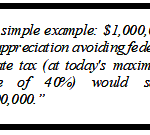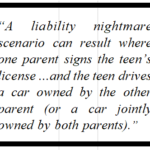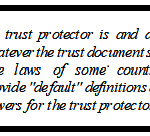
ASSET PROTECTION UPDATE: FRACKING – Here it comes….
©2019 By: Howard Rosen, Esq., Donlevy-Rosen & Rosen, P.A.
Fracking has become a dirty word in the media, largely because of protests from environmentalists and prominent Hollywood stars voicing complaints about water contamination and environmental damage. Whether or not these claims are valid, one thing is for certain – a litigation storm surrounding this industry, particularly those who lease out their land, is brewing. Those involved in fracking, who have often made a great deal of money, need to consider what might happen if they face a lawsuit stemming from resulting environmental issues and how to protect their newly-acquired assets.
Countless recent news articles and documentaries (including a film called Gasland), have chronicled the environmental concerns related to fracking. These stories describe private water wells contaminated with gas, homeowners able to ignite drinking water from their taps, methane-based explosions of homes and wells, wastewater containing radioactivity above drinking-water standards being discharged into rivers, and increased incidences of earthquakes in areas where hydraulic fracturing occurs. Concerns over the air emissions that are associated with drilling and pipeline compression operations also exist.
Consider this – you own a piece of land that is of interest to a large energy company as a fracking site. You are offered an attractive sum of money in exchange for the use of your land. As a result of the fracking taking place on your land, a lawsuit is brought against you for negligence and recklessness claims arising from medical conditions caused by fracking chemical runoff. If you have not taken measures to protect your assets, you could potentially lose everything if found liable.
The Energy Department has found that fracking is safe if done properly – something over which the landowner/lessor has no control. This is a very big “if”, but because the effects of hydraulic fracturing have never been fully studied, many fear irreparable damage to human health and the environment. Among the concerns are contamination of drinking water aquifers; harmful discharges into rivers, streams, and publicly owned treatment works; and increased emissions of toxic air pollutants.
According to Environment America, a coalition of state-based environmental groups, U.S. fracking operations created 280 billion gallons of toxic wastewater in 2012. Since 2005, fracking has used 250 billion gallons of fresh water, degraded nearly 360,000 acres, and released 100 million metric tons of greenhouse gases into the air. Environment America also claims that state data confirms “more than 1,000 cases of water contaminated by dirty drilling operations.
Critics have accused the report of over-hyping the dangers posed by hydraulic fracturing The Environmental Protection Agency has (for now) failed to link fracking to groundwater contamination in three separate studies it conducted, nevertheless, it is actively pursuing civil and criminal fracking-related liability on other grounds.
The most likely sources of liability from fracking are: violations of the Clean Water Act, public nuisance claims arising from seismic activity caused by fracturing, wrongful death claims arising from gas accumulation explosions in residences and businesses, strict liability, negligence and recklessness claims arising from medical conditions caused by fracking chemical runoff and natural gas leaks, sub-surface trespass claims, and landowner-lessors’ liability for damage caused to neighboring properties and residents.
Our decades of providing nationwide asset protection representation enable us to clearly see the writing on the wall: the litigation storm from fracking is coming. If you are involved in any aspect of the fracking process, what does this mean for you? The prudent person or company involved in fracking in any capacity will implement an offshore based asset protection structure so that if and when they are faced with a lawsuit, assets will be unreachable by a creditor – even the EPA. Why? Because the landowner-lessor has no way to ensure that the lessee-energy company won’t do something that results in liability for the landowner, and the landowner would be naive to rely on indemnification clauses in their contracts (Try to collect from Big Oil!). The key factor to understand here is that an asset protection plan is most effective when it is implemented before it is needed. In fact, it may not even be possible to implement an effective asset protection plan once a claim has been made or a lawsuit has been initiated.
A lot of people are becoming very wealthy as a result of the current boom in energy development. In our society, this wealth also means becoming a litigation target. We strongly recommend using experienced, qualified legal counsel to be certain that your asset protection structure is properly implemented. Keep in mind that all attorneys are not alike, and neither are all asset protection plans. It is important to conduct thorough research and base your decision on the experience and qualifications of the attorney you are considering.
ASSET PROTECTION UPDATE: FRACKING – Here it comes….
2019-12-09T11:28:06-05:00
2020-02-18T18:51:09-05:00
Donlevy-Rosen & Rosen, P.A.


Filed in: Articles, By Howard Rosen, For Clients, For Professionals

















Connect
Connect with us on the following social media platforms.